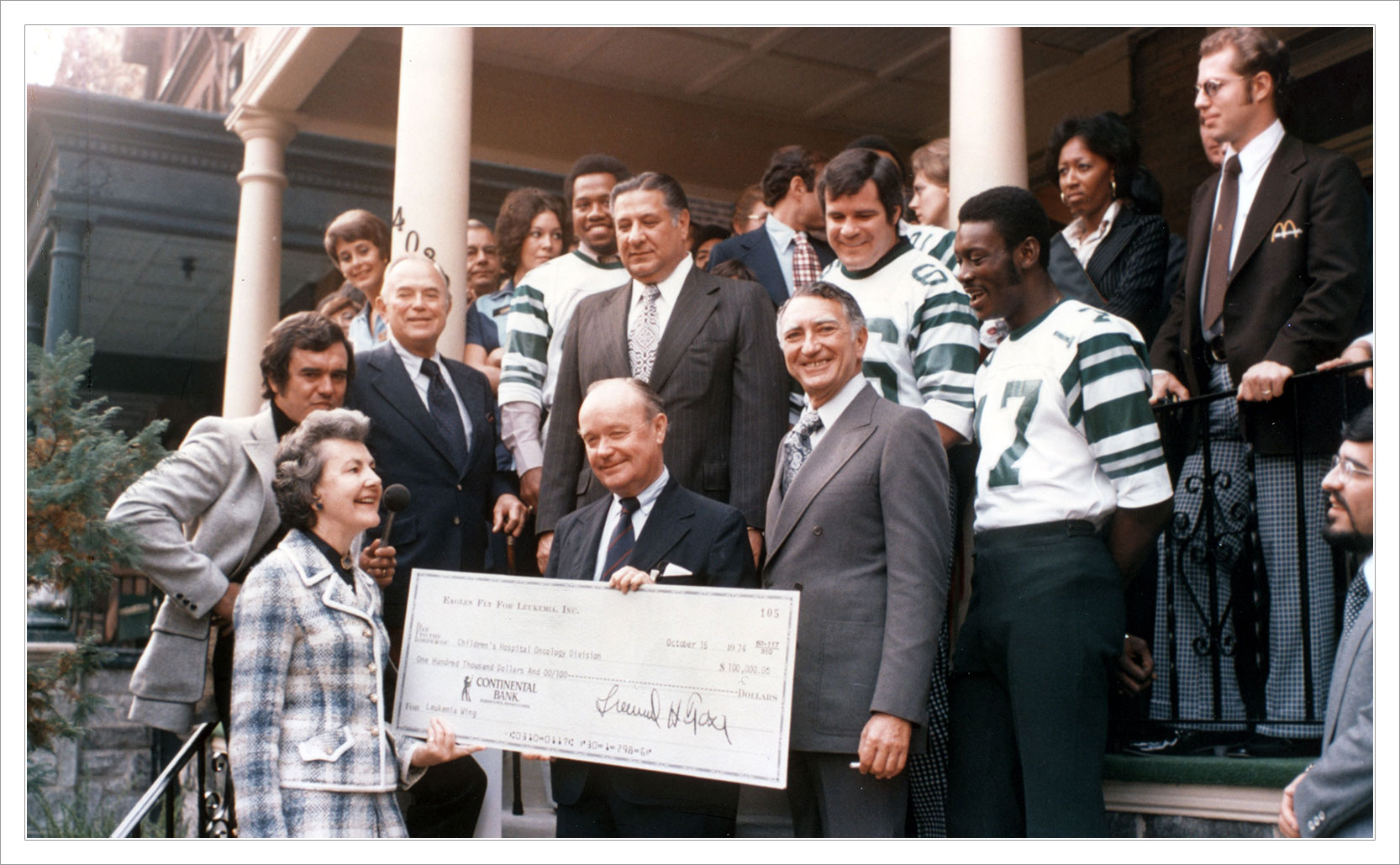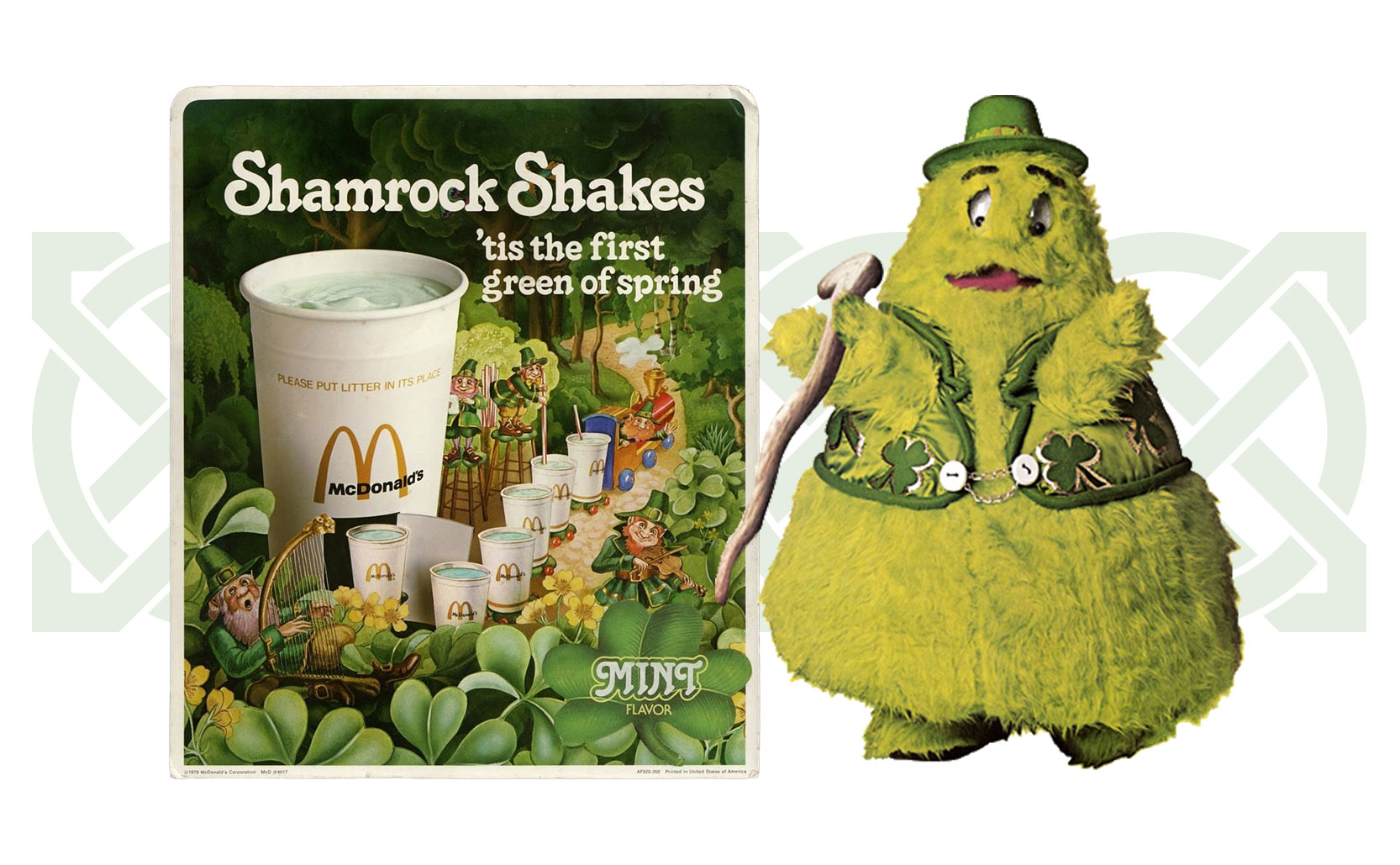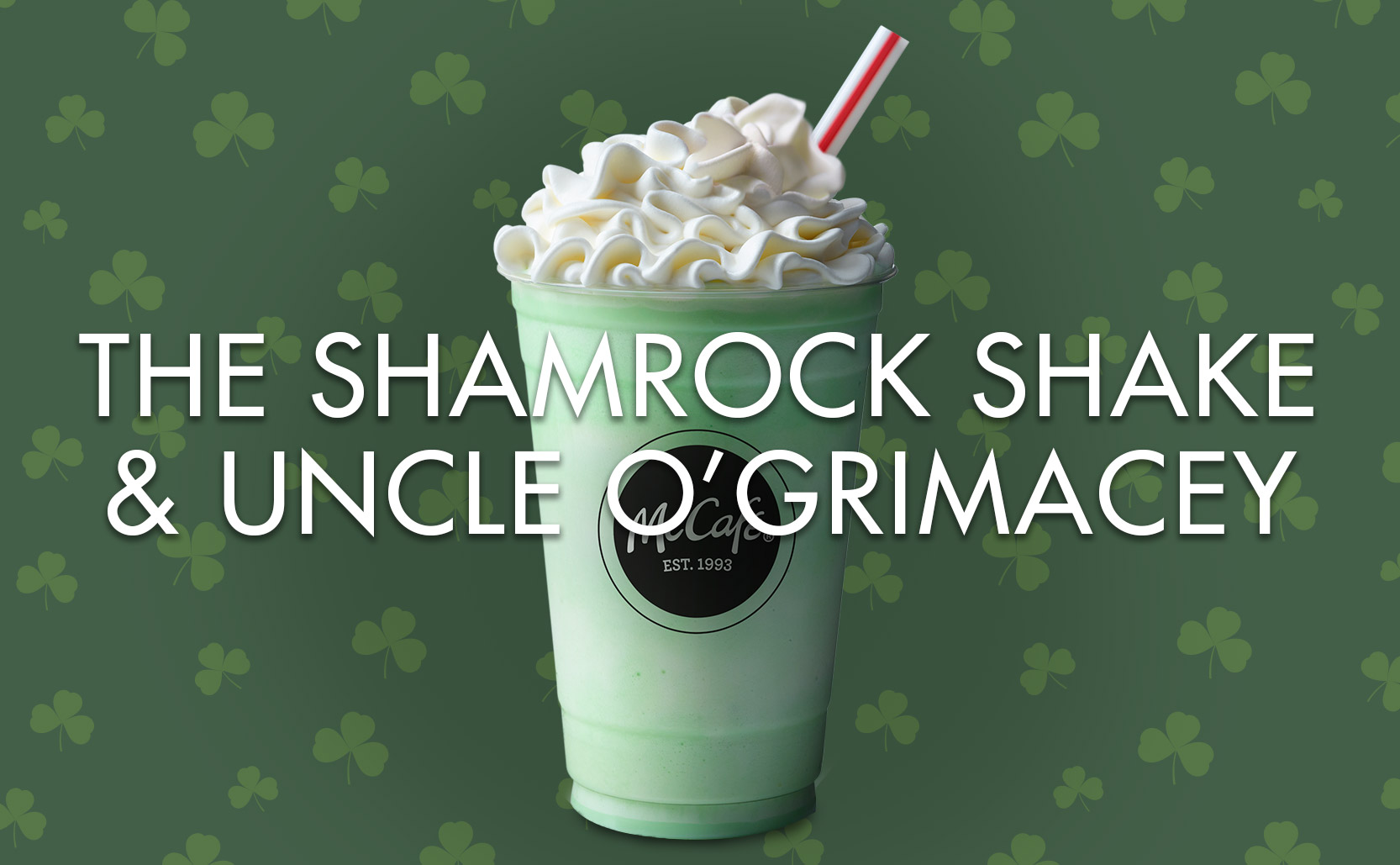the Shamrock Shake & Uncle O’Grimacey
The McDonalds Shamrock Shake helped pay for the first Ronald McDonald house.
In 1970 McDonalds introduced their lemon/lime flavored green Saint Patrick’s Day Shake. It eventually changed flavors and names to become the mint flavored, and alliteratively titled, Shamrock Shake. Like the autumnal artificial scarcity of pumpkin spice, the Shamrock Shake is only available around Saint Patrick’s Day in the February through March timeframe (except in Philadelphia where it has two seasons).

Philadelphia’s two seasons of Shamrock Shakes goes back to the role it played in creating the first ever Ronald McDonald House. In 1969 Kim Hill, daughter of Philadelphia Eagle Fred Hill, was diagnosed with leukemia. By 1973 the Hills and members of the Eagles organization started the Eagles Fly for Leukemia charity which helped pay for the new oncology wing at the Children’s Hospital of Philadelphia (CHOP).
After seeing parents camped out in the hallways and waiting rooms while their children received treatments, the charity went a step further in 1974 and purchased an old seven-bedroom house at 4032 Spruce Street not far from the hospital. The house would be a place for visiting families to stay free of charge while their children received treatment – a “home away from home”. To help pay for this the Eagles partnered with the local McDonalds restaurants asking them to donate money from their next promotional food item, which just happened to be the Shamrock Shake. The Eagles asked them to donate 25 cents per shake but McDonalds executives asked if they could have the naming rights to the house if they donated all of the proceeds. Eagles general manager Jimmy Murray said “… for that money, they could name it the Hamburglar House.” From this, the first ever Ronald McDonald House was established in Philadelphia in 1974. Today there are more than 375 Ronald McDonald House programs around the world which, at what would have been more than 2.5 million overnight stays in hotels, save families around $930 million each year.

Uncle O’Grimacey
As positive as the Shamrock Shake’s impact has been, there have been some missteps. To help promote the Shamrock Shake, McDonalds introduced the new mascot character Uncle O’Grimacey in 1975. The Irish uncle of the purple mascot Grimace, Uncle O’Grimacey (complete in his kelly green hat, shamrock-patterned vest, and shillelagh) would travel from Ireland each year bringing Shamrock Shakes to McDonaldland. Uncle O’Grimacey was quietly phased out of McDonalds marketing after a few years due in part to an alleged incident in Philadelphia in 1978 where the person portraying him made statements in support of the IRA and that British soldiers were better dead than alive.
Casual racism isn’t just relegated to the semi-distant past however. In 2017 McDonalds ran an ad promoting the Shamrock Shake. Unfortunately they had a man wearing a tartan Tam o’ shanter playing the shake like a set of bagpipes (which would be Scottish) while standing in-front of Stonehenge (which is in England). McDonalds stopped the ad and apologized saying they are “… strongly supportive of Ireland and respectful of its culture”. Begosh and Begorrah.



